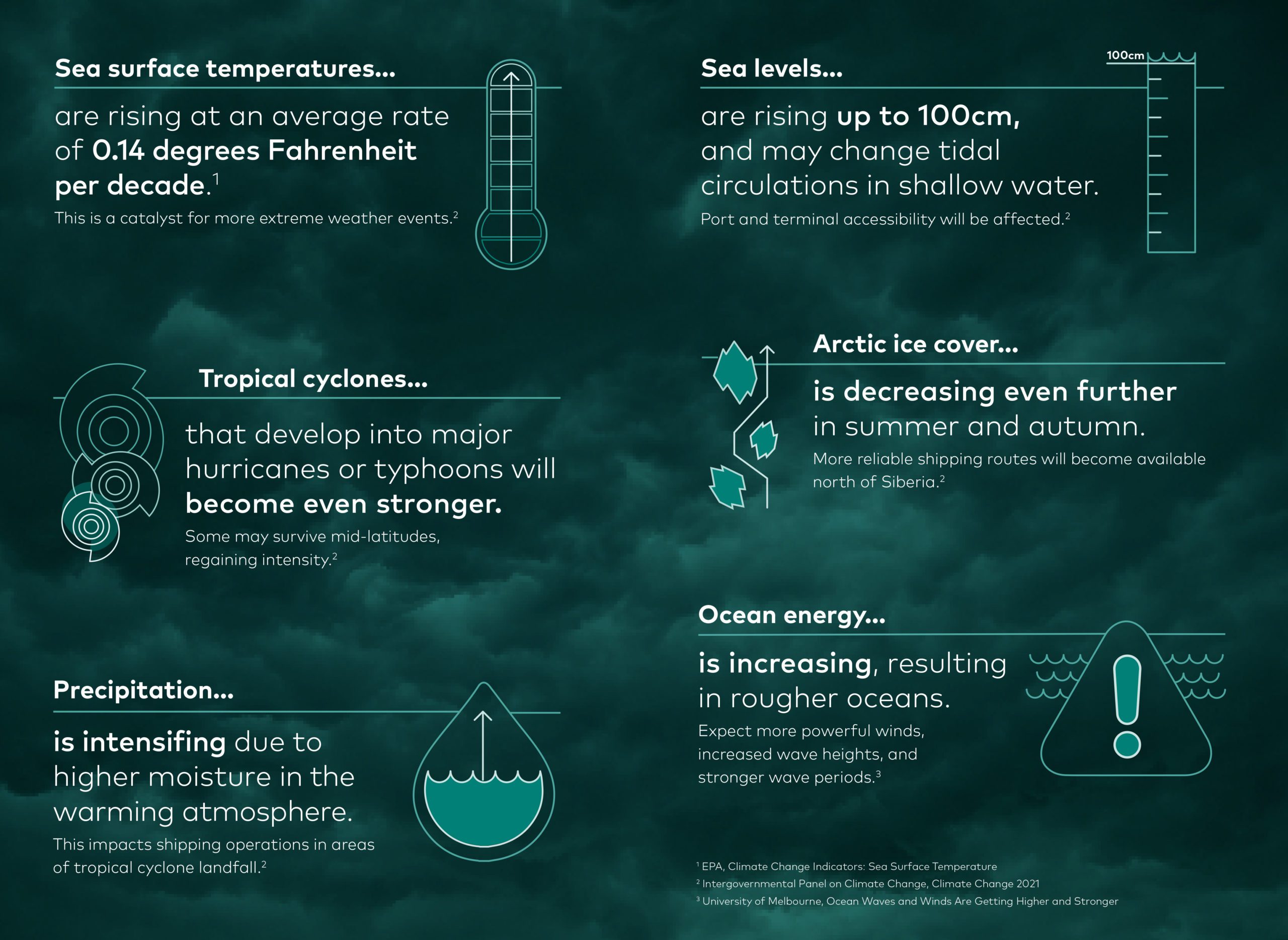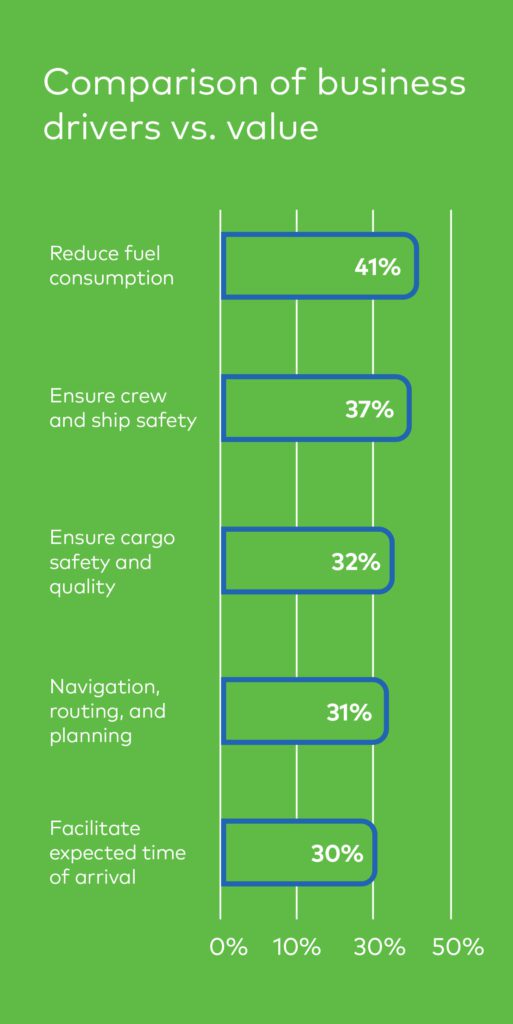Offshore Giants: The World’s Deepest Wells & Biggest Platforms
When the first offshore well was drilled off the coast of Summerland, California, in 1896, few could have imagined just how far the industry would go. That wooden pier-mounted rig...

In weather conditions close to the edge of safety limits, weather enriched vessel routing data help ship owners and operators make tough calls confidently. Extreme weather can evolve quickly, and having the right enriched weather data on hand ensures timely decisions to maintain safety.
Earlier this year, three consecutive storms around the North Sea wreaked havoc on vessels in the area. The Dutch Coast Guard and other European authorities had issued weather warnings as fierce storms moved across the region, with top winds recorded at 122 mph. The high winds and stormy seas unmoored the freighter Julietta D, which collided with the Pechora Star. Although both ships were damaged, the entire crew was safely evacuated. The storms also toppled cargo. The Panama-registered Marcos V, sailing from Bremerhaven, Germany, to Rotterdam, Netherlands, reported that at least 26 empty 40-foot containers had been lost overboard. At the same time, images showed additional boxes hanging from the ship’s side, and several stacks collapsed.

Shipping disasters like these show the need for a more intelligent approach toward severe weather warnings and better coordination between ship and shore around the options ship captains can take to ensure the safety of the crew, ship, and cargo. It requires insights from experts that combine master mariner experience with severe weather expertise, who act as risk communicators, and who can provide different options with a calculated risk.
“Weather routing is a vital tool for us to ensure maximum safety for our crews, cargoes, and vessels. It also helps us to save time, money and, of course, fuel. This is one way we can minimize the environmental impact of our ships. DTN weather routing is used on board of 100 vessels in the Spliethoff Group, and in our office.”
Karel van Zijl, Director Business Innovation & Analytics at Spliethoff
Market and regulatory pressures drive the need for integrated data from multiple sources to ensure the shipping industry remains competitive. Weather intelligence is an integral part of these operational decisions. For instance, fuel consumption, which can account for half of the operating costs, allows for significant savings when integrated with weather data — especially with the recent spike in fuel prices. Optimal weather routing can offer fuel savings up to 5%, depending on the type of vessel, the season, and the conditions.
A recent DTN research report surveying 150 shipping companies revealed the key business drivers for purchasing enriched weather data are reducing fuel consumption and ensuring the safety of crew, ship and cargo. The industry seeks integrated solutions that enable weather influenced routing decisions that reduce costs and carbon emissions while maintaining high safety levels.
By integrating weather enriched vessel routing into their systems, shipping companies can generate route options based on time, cost, or fuel constraints, either with or without a given ETA. And use weather-optimized route networks to plan port-to-port routes, taking into account navigational restrictions and port approaches. Most important however is to secure crew, vessel and cargo safety during the voyage and to avoid severe weather. This can be achieved by calculating alternative routes, or through variable speed routing.
The shipping industry is at the point where integrating enriched weather data is a strategic imperative to ensure shipping companies are well-positioned to face the challenges ahead.
As computing power and metocean models become more robust, so does the data. For example, one DTN marine weather dataset using an ensemble of models produces terabytes of information for a single wave forecast. The data compounded for hourly forecasts would be too massive for traditional systems. Cloud-based solutions and flexible APIs integrated into the shipping company’s onboard and onshore systems can manage the large datasets and give mariners real-time information when and how they need it.
Every shipping company has data integration projects running; however, these are often siloed. Digitalization delivers the greatest value when performed across an organization, built on a data-sharing culture with processes and people driven by a clear leadership buy-in and company mission.
Many respondents to the research felt that these fundamentals are missing, which provides a significant barrier to accelerating digitalization and data integration projects. The report highlights the single biggest obstacle to digitalization poor data collection process, as confirmed by 45% of respondents.
These sophisticated data integration projects have typically relied on proprietary systems used by market leaders who are more advanced in their integration journey. But, increasingly, the availability of innovative single-system platforms featuring pre-integrated data makes access to similar capabilities possible. With strict regulations on the horizon, the number of shipping companies that adopt a single system will grow as data integration becomes a key requirement. And, with these single-system platforms available via API, it’s easier than ever for every shipping company to unlock the weather intelligence they need.
Full weather data integration is an emerging phase in digitalization for the shipping sector. Shipping companies are understandably focused on vessel improvements like fuel type and ship engine optimization first. But as companies attempt to navigate increasingly complex market conditions, combining these existing optimization approaches with weather-enhanced use cases and enriched weather data will help everyone make the tough calls ahead with more confidence.

Sign up for gCaptain’s newsletter and never miss an update

Subscribe to gCaptain Daily and stay informed with the latest global maritime and offshore news
Essential news coupled with the finest maritime content sourced from across the globe.
Sign Up